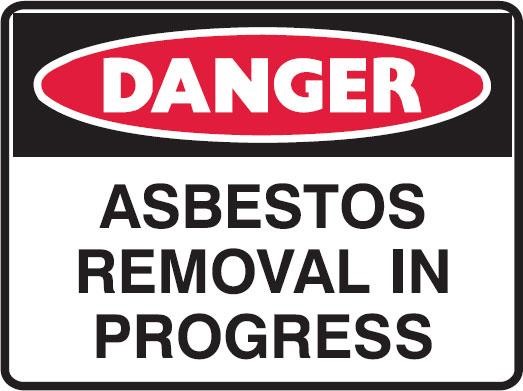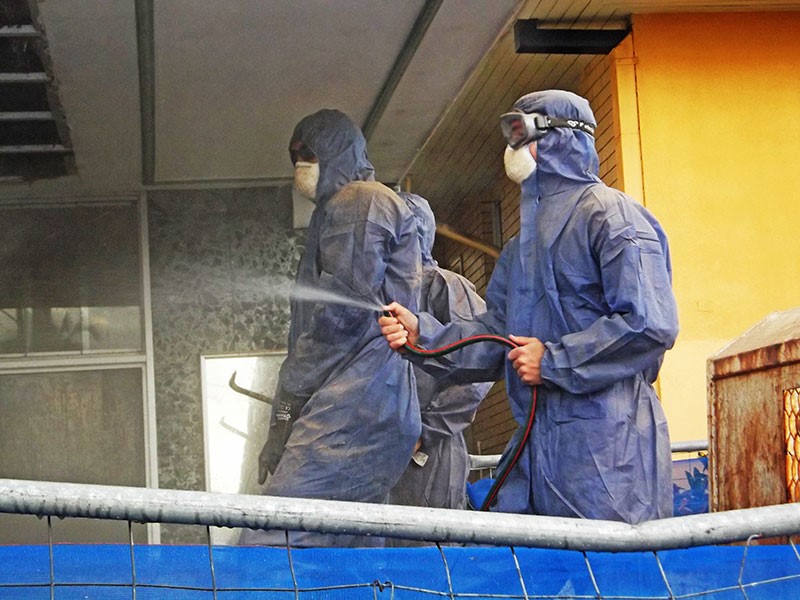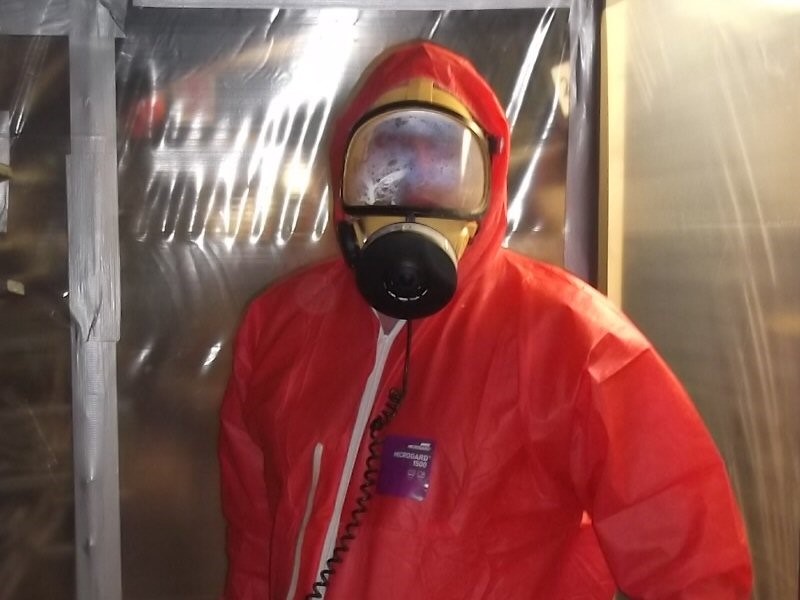Asbestos Abatement
Posted on Thursday, March 31st, 2016 at 9:07 am

Asbestos abatement (removal) sign
Asbestos abatement or removal is procedures used to control the release of asbestos fibers into the air from asbestos containing materials. Abatement can be achieved through the following steps:
- Removal
- Encapsulation
- Enclosure
Asbestos Abatement – Removal
This form of asbestos abatement is the complete removal of asbestos materials from a building or within a building. Removal is the best option for abatement especially where buildings have highly disturbed asbestos fibers. The whole process may take some years before demolition of a building is possible. Some of the processes include pre and post-abatement air sample testing and the employ of asbestos removal consultants to give recommendations of removal and/or containment. The procedure for removal is costly and requires professionals to undertake, however, it permanently rids further asbestos exposure chances.
Asbestos Abatement – Encapsulation

Asbestos abatement – Encapsulation
Encapsulation is abatement by way of coating or treating asbestos containing materials with an acrylic-containing sealant. The sealant coats or embeds the asbestos fibers binding them to prevent release. The treatment creates a layer on the surface of the asbestos containing material and/or binds the asbestos fibers together.
It is used as a method to repair and maintain asbestos materials which may be damaged or previously encapsulated. Encapsulation brings asbestos materials back to an intact state preventing fiber release.
This can also be used as a measure for safe removal of asbestos materials. Whereby asbestos materials are encapsulated and thereafter removed from buildings. This process greatly reduces chances of fiber release into the environment.
Encapsulation treatments can easily be bought for household use, however, it is recommended that experts or professionals attend to repairing and maintenance of asbestos materials.
Asbestos Abatement – Enclosure

Asbestos abatement – Enclosure
Enclosure is abatement through wrapping or covering of asbestos containing materials. Enclosure assists in trapping any airborne asbestos fibers inside the enclosed area so as not to release them into the air. Enclosures can be created for unused rooms or areas cordoned off from use due to the presence of asbestos containing materials. These areas can include attics.
Enclosures are sealed off by polyethylene, duct tape and/or negative air pressure machines. Enclosures can be used in association with removal of asbestos materials. For example, when using negative air pressure machines, this keeps the contained area pulling in fresh air so as not to release any fibers into the surrounding environment.
Enclosures should never be disturbed by opening or drilling as this will release the asbestos fibers into the environment.
While the above procedures apply in various environments it is important to note that any type of abatement employed must be carried out by a professional.